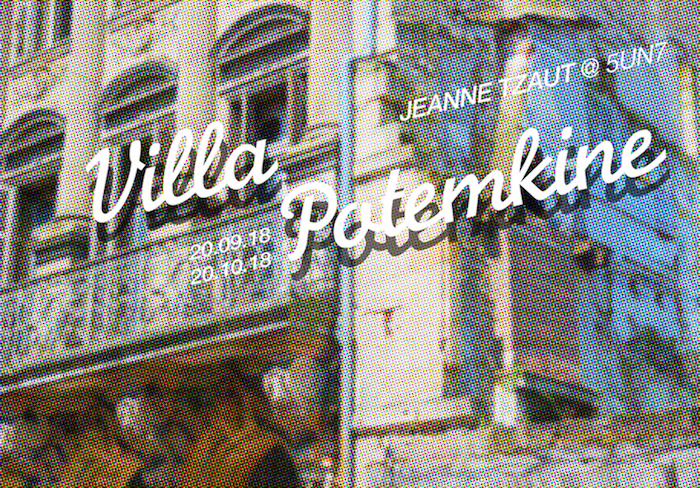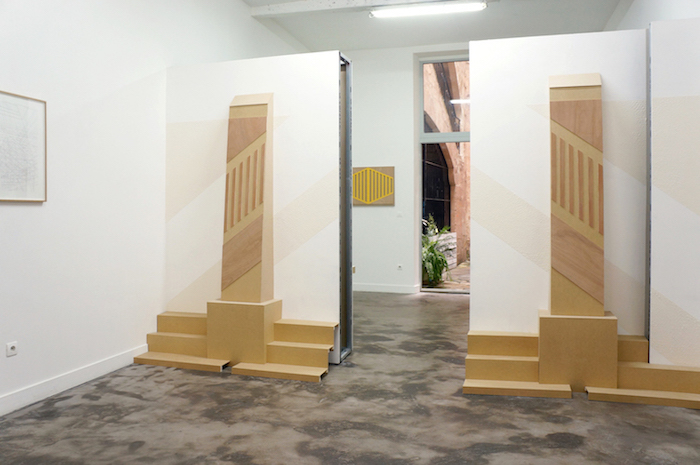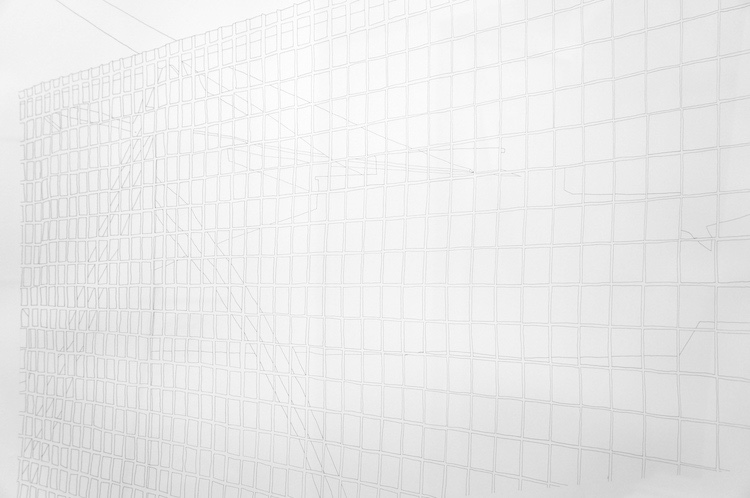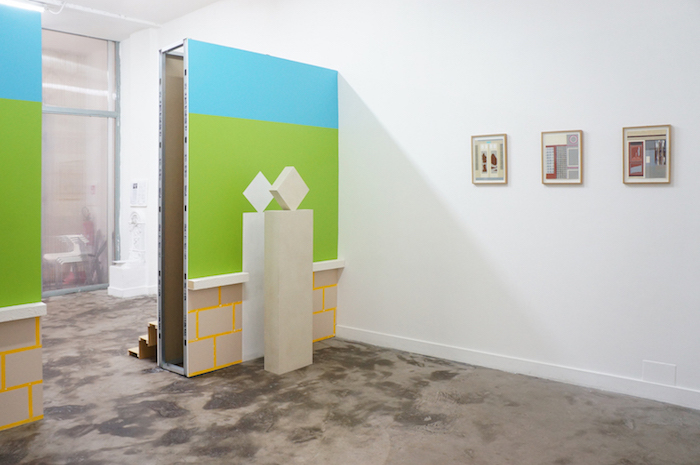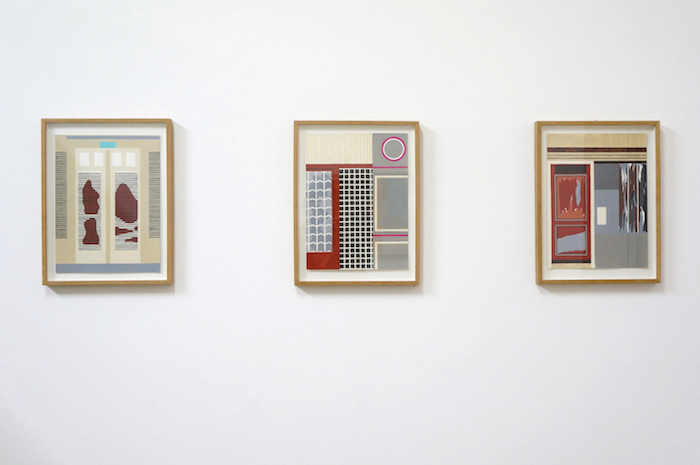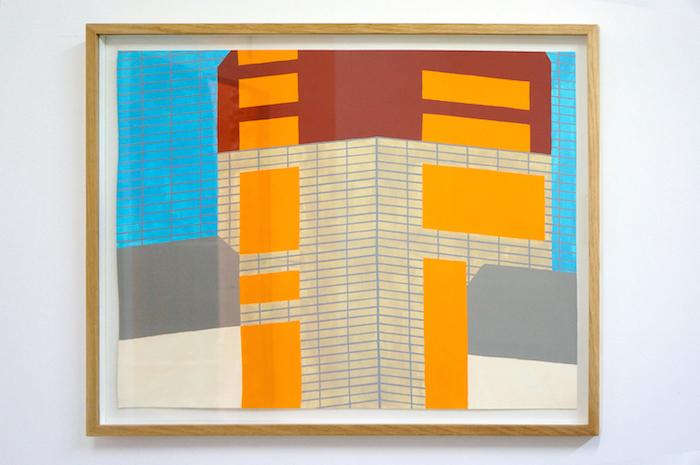The work of Jeanne Tzaut takes source and form in a practice of urban strolling. She collects elements, details and architectural fragments, disparate and of all times, that she will then synthesize, sample and expose, by exploiting their qualities in terms of volume and graphics to make them voluntarily switch to each other. Specific points observed in the real will be de-re-placed, then extrapolated in order to increase the abstraction of its drawn and painted images. Subsequently this collection is staged to make environment in the context of the various interventions and facilities designed for and in the places it invests.
“Villa Potemkine” * does not derogate from the protocol mentioned above. This exhibition, designed specifically for the contemporary art space 5UN7, questions the notion of “décor” but also that of its backside. Behind the scenes, A “plasterboard” that assumes and exposes here its material, its volumes and its slices on the wire of an image with acrylic dimension falsely playful punctuated with “quirks”. “Côté Jardin”, the discreet charm of the facades spruce and primed with complicit glances. “Côté Cour”, the offbeat, obsolete and foundational urbanity mingling with Nouvel (les) standards of contemporary cosmetics. Thus are the lexical urban fields joyful and quirky with which Jeanne Tzaut expresses herself.
The “cache-misère” and its corollary the worst is unsuitable for his eyes. Because for Jeanne, on the sidewalks of our beautiful urban landscape, charmfully recollect all the stucco steps, faience facades, sandstone promontories, plaster macaroons and vernacular patterns. On the decrepit walls but carefully ripined, the illusion is “complete”, these hybrid places whose fragile beauty is matched by ephemeral temporality are expressed screaming to who knows how to hear them: “Jeanne helps us” lol.
At a time of great change in Bordeaux Métropole, the city is manifested both through its urban planning choices and through its social-economic and tourism choices. Ambitious building sites and vast facade remodels hammer shear stripping and weld on the rhythm of the contemporary urban utopian symphony, the exhibition “Villa Potemkin” * resonates like the re-appropriation of a territory, which before being re-visited or exploited is inhabited.
Amandine Pierné, Joan Coldefy and Marc-Henri Garcia for 5UN7.
* The term “Potemkin Village” refers to a “trompe l’oeil” for propaganda purposes. According to a historical legend, luxurious facades were erected from cardboard, at the request of Russian Minister Grigory Potemkin, to hide the poverty of the villages during the visit of Empress Catherine II in Crimea in 1787.
Jeanne Tzaut is a graduate of the EESI of Angoulême. She lives and works in Bordeaux.


